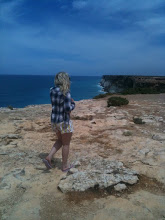Researching news stories before they are written is crucial
for the success and authenticity of a news product Journalists must research
their news stories no matter what their knowledge on the topic, what the medium
is and whether it is hard or soft news.
It is always good to find ulterior view points on the known
topic of the news story to avoid the article, package or broadcast being of a
biased nature.
I found this technique worked better when researching for my
PR studio interview as I was given all the information about the event prior
the interview, I specifically researched material that my two interviewees had
left out in order to create a balanced view point in the interview and maybe
even make them trip up if they hadn’t done their proper research.
According to the University of North Carolina and Pembroke
there are three main tools that journalists apply when writing stories.
include:
1. 1. Interviews
2. 2. Observations
3. 3. Background Research
1. Interviews should be conducted with knowledgeable people
about the event in which the story in question is being written about. This can
include witnesses, experts, Ambulance, police or fire officers, leaders, politicians
and basically anyone who is involved with the event. You wouldn’t interview
George Clooney about the situation in Syria for example.
The people we chose to interview had a very prominent role
in the Canberra centenary, Ian Hill being the director of ACT tourism, and
Jeremy Lasek the executive director of the Canberra centenary team.
We would have loved to get Robyn Archer the Director but she
was sadly overseas and Jeremy told us that he had a similar position to her
anyway without the fun of the overseas travel!
2. Observations can be made via observing events, attending
speeches and or public addresses and even conducting experiments or tests.
In our case the observations we made were through the
interviews themselves and the prominent themes the talent was trying push which
we discovered was about the marketing of the centenary so people would actually
come along and visit as opposed to how much money they would make out of it or
what events were going on.
When we interviewed these people a our perspective of what
angle to take on the centenary story changed.
This was because we made the observation that
both talents were talking for a majority of the time about the social media
aspect of the marketing campaign so in turn we chose to focus more on the
social media marketing of the centenary namely the human brochure by interviewing
we gathered significant insight into the social media marketing aspect as we
had more information on this than of the economic boom Canberra would receive.
3. Background research can include searching for details
about the story online, inspecting government documents, reading personal
papers and many more.
In order to complete our news story we did significant
research online about the social media marketing campaign and found several
other examples of how the centenary committee and tourism Canberra were
incorporating this new type of advertising, such as Diaspora which was aimed at
those who had passed through Canberra to tell their stories via video links
they uploaded, the “Like “Canberra campaign which was aimed at locals and of
course our main focus the human brochure.
We followed these three steps of researching stories and
completed to what we believe to be an interesting and of high standard news
package.
Further information about Research techniques can be found
at the University of North Carolina and
Pembroke website:

No comments:
Post a Comment